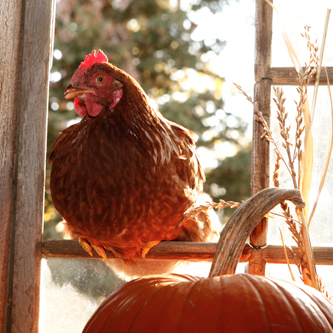Molting is a natural process that chickens go through annually so they can replenish and replace their feathers. Chickens need to grow new feathers to allow them to effectively regulate their body temperature especially those in colder environments.
Chickens will molt several times during their lives. The first molt is called a “juvenile” molt and occurs when they are only 6 – 8 days old. During this molt, the baby chickens actually lose their downy covering to replace it with actual feathers. The second juvenile molt occurs for the male when he is about 8 -12 weeks old when his ornamental feathers will come in.
The first adult molt typically starts around 18 months of age and occurs in the late summer or early fall. This molt will last approximately 8 – 12 weeks. However, some chickens can spread the molting process out up to six months.
Adult chickens will either have a “soft” or “hard” molt. With a “soft” molt, the bird loses it feathers slowly and it is hard to tell that they are molting. With a “hard” molt, the chicken dramatically loses it feathers and can appear rough-looking or naked.
The decrease of daylight coupled with the end of an egg-laying cycle is the most common trigger for molting. Physical stress, malnutrition, lack of water, extreme heat and non-typical lighting conditions can also trigger molting throughout the year.
A molting chicken cannot support both egg and feather production at the same time and this is why chickens either stop laying eggs all together or have a significant reduction. Once feather replacement has occurred, egg laying will begin again.
When your chickens are going through a molt, providing additional protein is key. Most layer feeds are at around 16% protein. When your chickens are molting, you should change to a higher protein feed, such as a broiler feed, to provide around 20 – 25% protein. You can also supplement with higher protein treats such as sunflower seeds, bone meal, and cooked meat.
When your chickens are molting they will be more susceptible to being picked on by the other birds if they have bare skin. They will also more than likely not want to be handled as feather replacement can be uncomfortable.
For more information on raising chickens, check out A Guide to Raising Chickens available through our website.


